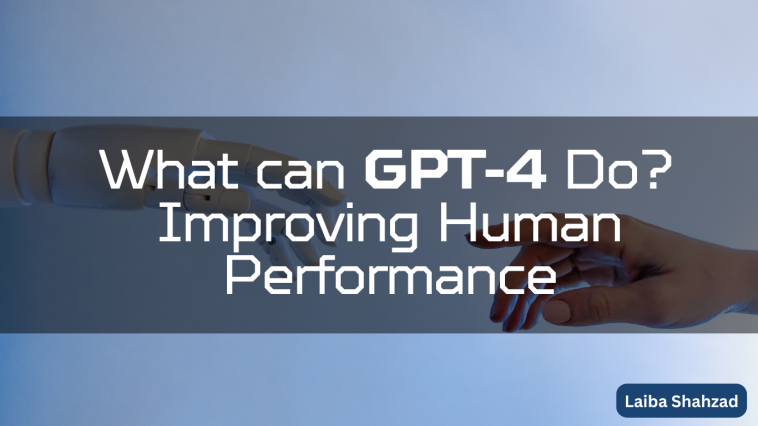OpenAI has officially announced the latest version of the powerful AI language model, GPT-4.
As GPT-4 is the successor of the previous version of GPT-3 that has taken the internet by storm. The most notable feature of GPT-4 is its “multimodal” capability. That means it can generate content from both image and text prompts and making it a versatile tool for a range of applications. And due to this feature, GPT-4 may even have more potential to revolutionize how we can interact with AI technology.
What is ChatGPT and difference between GPT-3 and GPT-4:
GPT stands for “generative pre-trained transformer”, which is a type of advanced artificial intelligence technology known as a large language model (LLM). These neural networks are capable of performing a range of natural language processing tasks such as answering questions, summarizing text, and even generating lines of code.
The key to their success lies in their ability to use deep learning to produce text that closely resembles human language. This means that they can generate responses that are coherent, fluent, and natural-sounding, making them a powerful tool for various applications.
ChatGPT:
ChatGPT is an AI-powered chatbot that allows people to interact with a computer-generated language model. Think of it like a virtual assistant that can respond to your questions or engage in conversations with you.
The technology that makes ChatGPT possible is known as GPT-3 and GPT-4. If you were to compare ChatGPT to a car, then GPT-3 or GPT-4 would be like the engine that powers it. In other words, they are the behind-the-scenes technology that allows ChatGPT to generate coherent and human-like language in response to user input.
GPT-3:
GPT-3 is a language model developed by OpenAI that was first released in 2020. It is known for being the largest neural network ever created, with an impressive 175 billion parameters. This means that it has been trained on an enormous dataset and is capable of generating coherent and human-like language.; Since its release, GPT-3 has been refined and fine-tuned through the GPT-3.5 series, which was introduced in 2022. These updates have further enhanced GPT-3’s natural language processing capabilities, making it an even more advanced AI technology.
GPT-4:
OpenAI has recently announced the launch of GPT-4, which is the latest and most advanced version of their language model series. As the successor to GPT-3, it boasts a range of impressive capabilities that set it apart from its predecessor.
One of the most notable improvements is its ability to process up to 25,000 words, which is about eight times as many as GPT-3. This means that it can handle even longer and more complex pieces of text with ease. Additionally, GPT-4 can also process images, which allows it to generate content based on both text and visual cues.
Moreover, GPT-4 has been designed to handle much more nuanced instructions than its predecessor, GPT-3.5. This means that it can respond to even more complex prompts and generate more accurate and contextually-appropriate responses. With its advanced capabilities and cutting-edge technology, GPT-4 represents a significant step forward in the field of natural language processing.
Some amazing capabilities of GPT-4:
According to OpenAI, GPT-4 is uniquely skilled at handling tasks that require advanced reasoning, a sophisticated understanding of complex instructions, and a high degree of creativity. This means that it can generate responses that are more nuanced, contextually appropriate, and diverse than previous language models. One of the most amazing capabilities of GPT-4 is multimodal which means that it can accept image and text inputs and emit text outputs.
Can GPT-4 code an entire game for you? Yes, yes it can.
Here’s how I recreated a Snake game that runs in your browser using Chat GPT-4 and @Replit, with ZERO knowledge of Javascript all in less than 20 mins
pic.twitter.com/jzQzSRIkfz
— Ammaar Reshi (@ammaar) March 14, 2023
Who can access GPT-4?
While GPT-4 can process both text and input images as the text-input feature will be available to ChatGPT Plus subscribers and software developers with a waitlist. At the same time, image input availability is not publically available.
The fact is that GPT-4 is capable of processing both text and images represents a significant breakthrough in the field of natural language processing, and it opens up exciting new possibilities for the future of AI technology.





